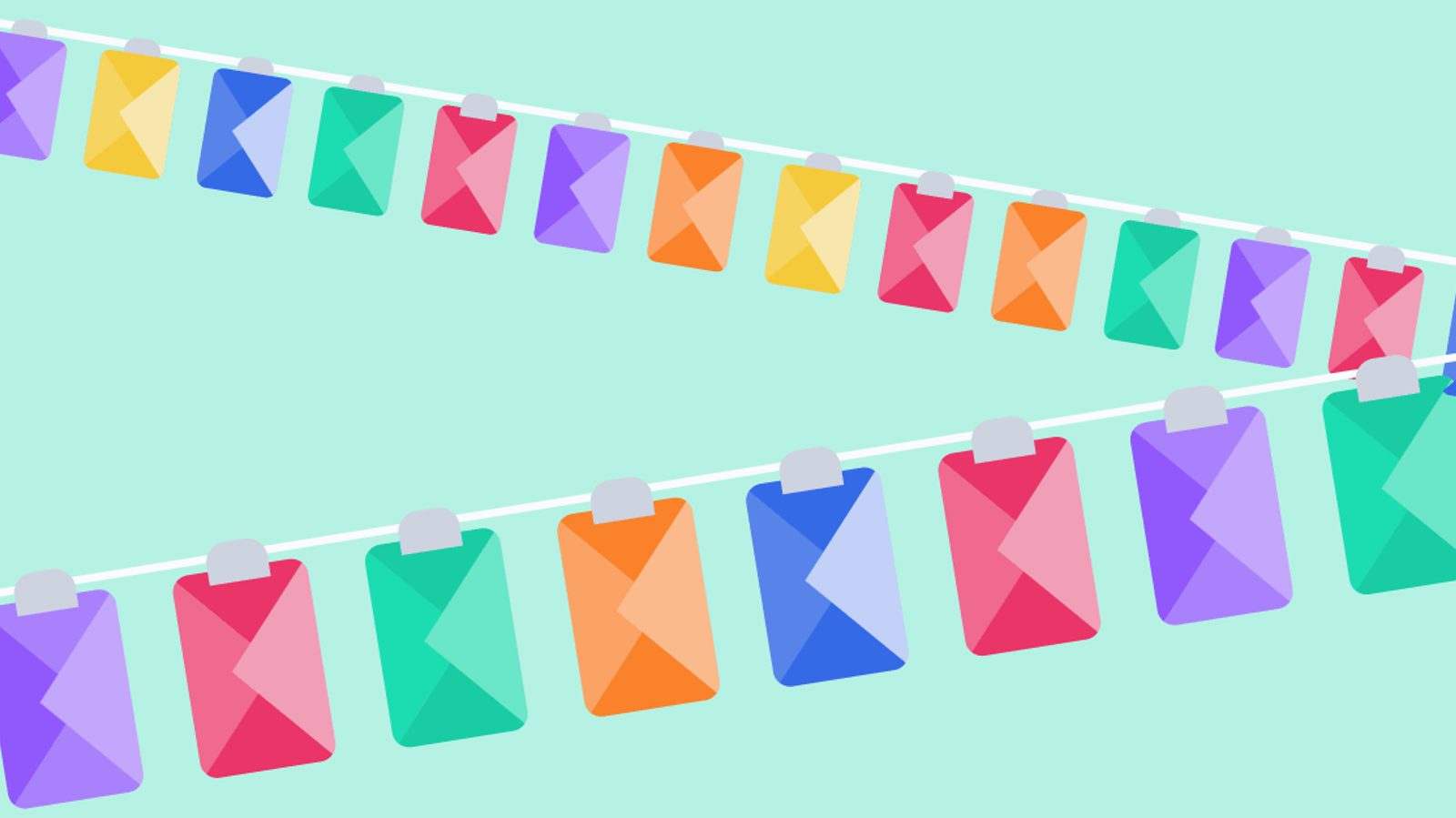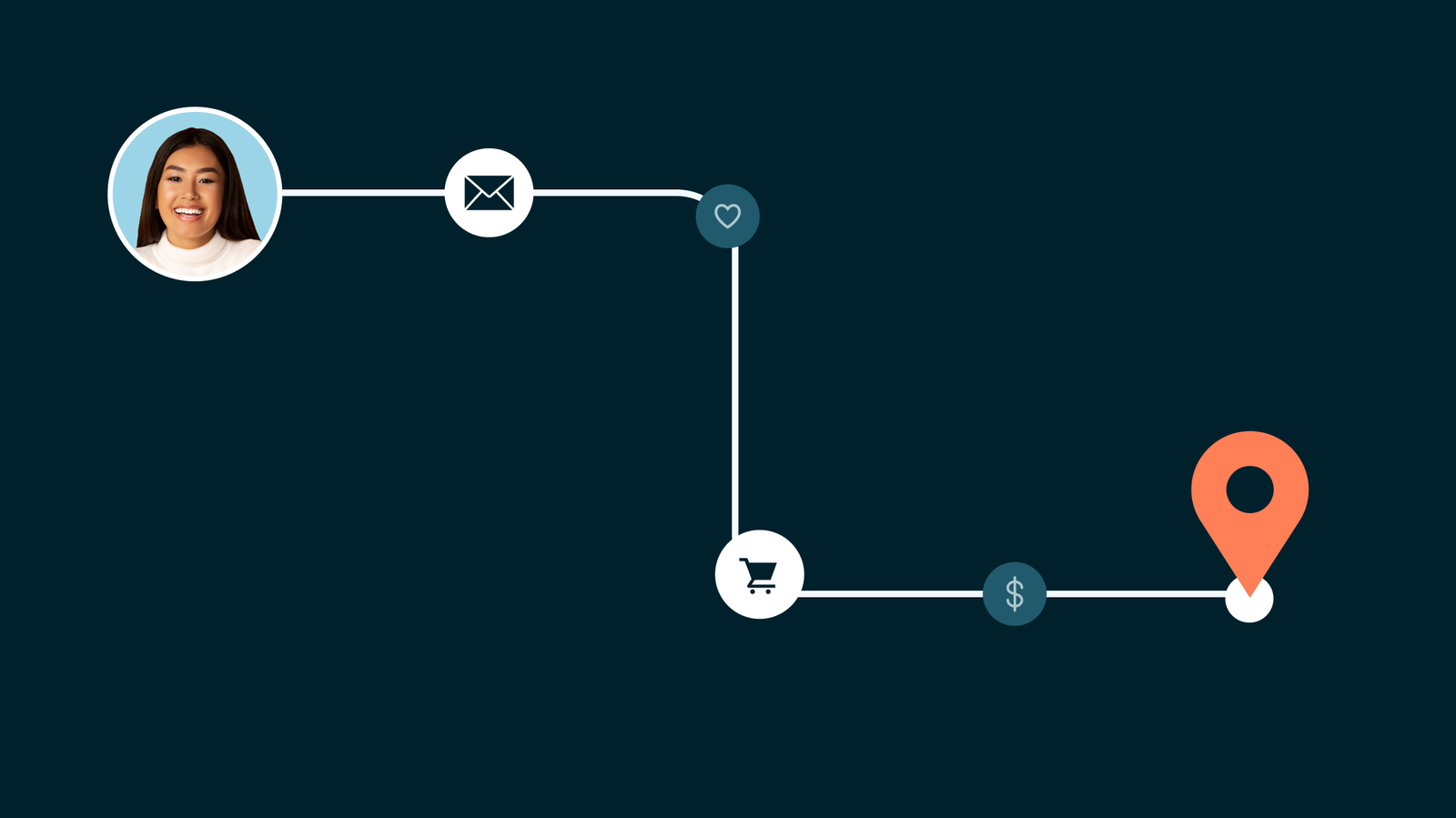In today’s environment, taking a “build it and they will come” approach is unlikely to yield great success.
Having a website, a social media page, or a Google My Business listing is a great start but insufficient to truly attract, engage, and convert new customers.
To succeed, you need to reach customers where they are when they’re there. In the marketing realm, we call that multi-channel marketing.
But what does multi-channel marketing really look like in practice, and how can ambitious companies apply multi-channel practices to nurture buyers throughout the entire customer journey?
In this article, we’ll look at 7 powerful multi-channel marketing examples to provide inspiration and set you on the right path to growing your customer base.
What does multi-channel marketing really mean?
Multi-channel marketing is, thankfully, 1 of those marketing terms that is actually named what it means.
Brands use multi-channel marketing strategies to run marketing activities across various channels. This might include SEO and organic search, PPC, social media, digital advertising, email, and even offline channels like direct mail and billboards.

Pretty simple stuff, right? Sounds like something every business should be engaging in?
Definitely, and here’s why.
When done well, multi-channel marketing campaigns provide a consistent and seamless customer experience.
Potential customers may come across your brand through a Google search, download an ebook, receive a series of educational emails from you, and then see retargeted digital ads for your product on relevant websites.
It’s all about reaching customers where they are when they’re there. And today’s buyers are everywhere.
Customers no longer decide they need a product, head to a few retail stores, talk to a sales rep or 2 (the experts), and buy based on their recommendation. We’d call this single-channel, but single-channel customers rarely exist in today’s market.
Instead, prospective customers might:
- Read a blog post that suggests several solutions for the problem at hand
- Ask for recommendations on social networks
- Check out some reviews on various digital channels to narrow down their selection
- Visit a couple of physical stores to see the product in real life
- Purchase online after receiving a discount code
We call this process the customer journey.
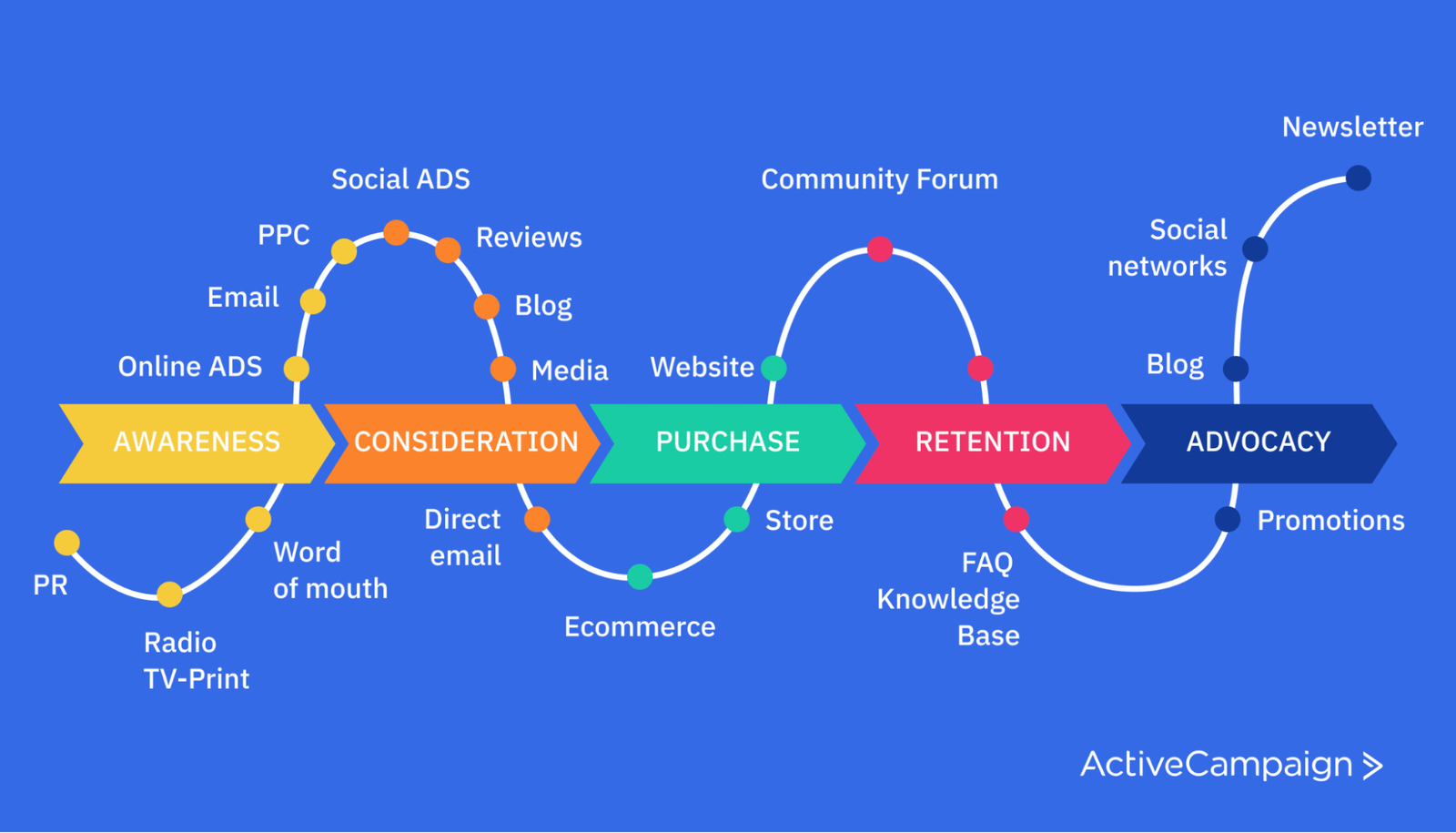
Cross-channel marketing’s big win is to align with this customer journey, putting the right marketing messages in front of target customers and reaching them in their preferred channels as they use them.
Sounds nice in theory, but what does this look like in practice?
Let’s explore 7 multi-channel marketing examples that illustrate how your marketing efforts can create a cohesive customer experience that educates buyers and informs purchase decisions.
7 multi-channel marketing examples
1. TestGorilla
TestGorilla, a pre-employment screening testing platform, uses several marketing channels in its lead generation funnel.

Having identified a target customer, TestGorilla serves an educational ad on Facebook.

Notice that this ad isn’t product-focused; it isn’t trying to sell TestGorilla. That would be the wrong move at this stage in the customer journey.
Instead, TestGorilla directs viewers to an actionable blog post on diversity recruiting, a highly relevant topic to their target audience.
Having seen some engagement with that ad, TestGorilla approaches the customer through another channel: email.

This time, the content is a little further toward the bottom of the funnel. TestGorilla wants to demonstrate to potential customers exactly how the product works and the benefits they’ll receive from it.
Knowing its customers are likely reviewing other options, TestGorilla runs Google Ads against top competitors like Toggl Hire.

Note that, again, the idea is not to sell TestGorilla (see the free download promoted in this ad). And, if that ad doesn’t see any engagement, the same free guide is provided via email with the idea of generating a new lead.

2. Toggl Hire
Similarly, the marketing team at Toggl Hire knows that their target audience is out to compare them against competitors.

However, Toggl Hire opts for an inbound marketing approach rather than running ads and sponsored email sends.
First, it develops content that serves high-intent keywords such as “toggl hire vs testgorilla.”
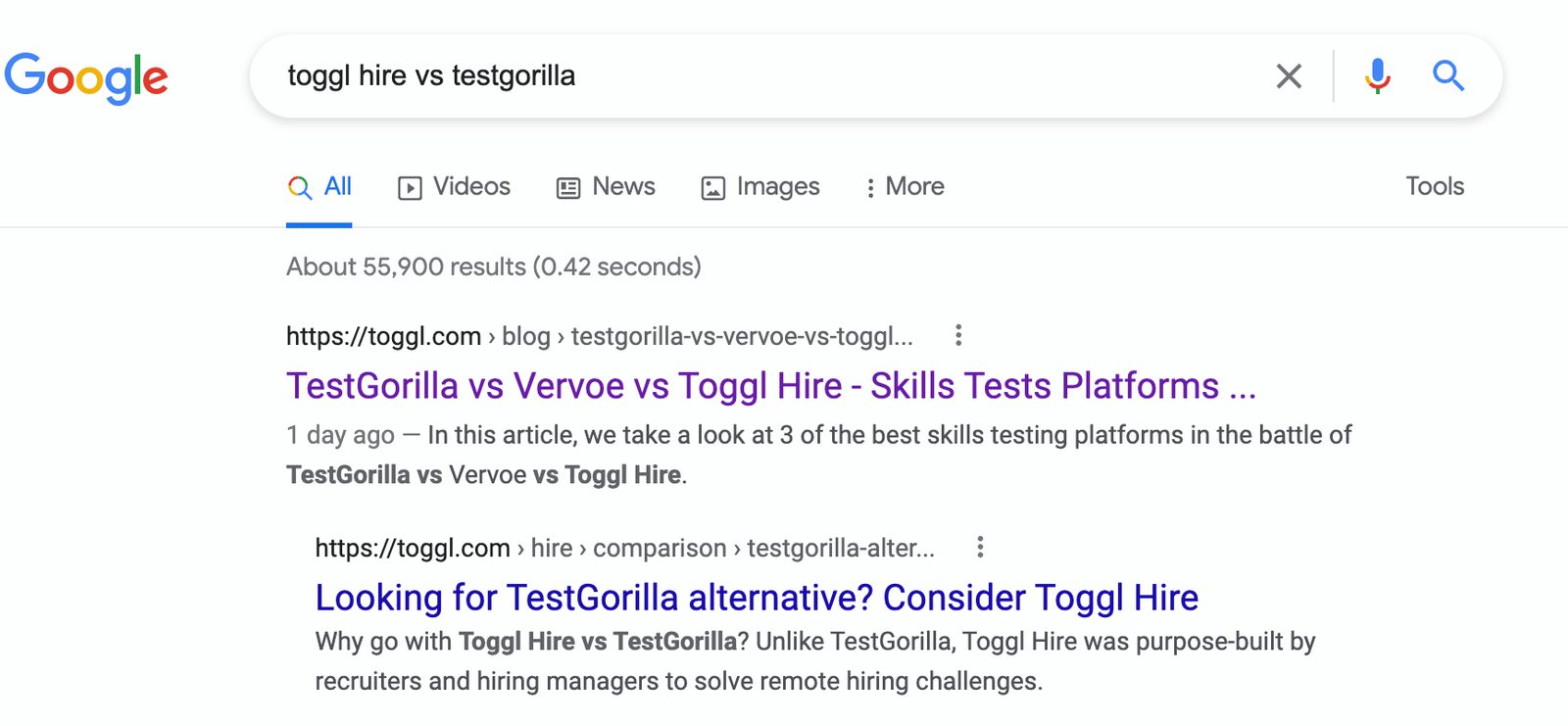
The goal with this content is to educate, not to convert.
So, Toggl Hire provides an in-depth summary of the 3 alternatives and aims to direct readers to its social channels.

Toggl Hire then provides further advice and education on LinkedIn (a platform used heavily by its audience of recruiters and hiring managers), nurturing the relationship until the customer is ready to buy.
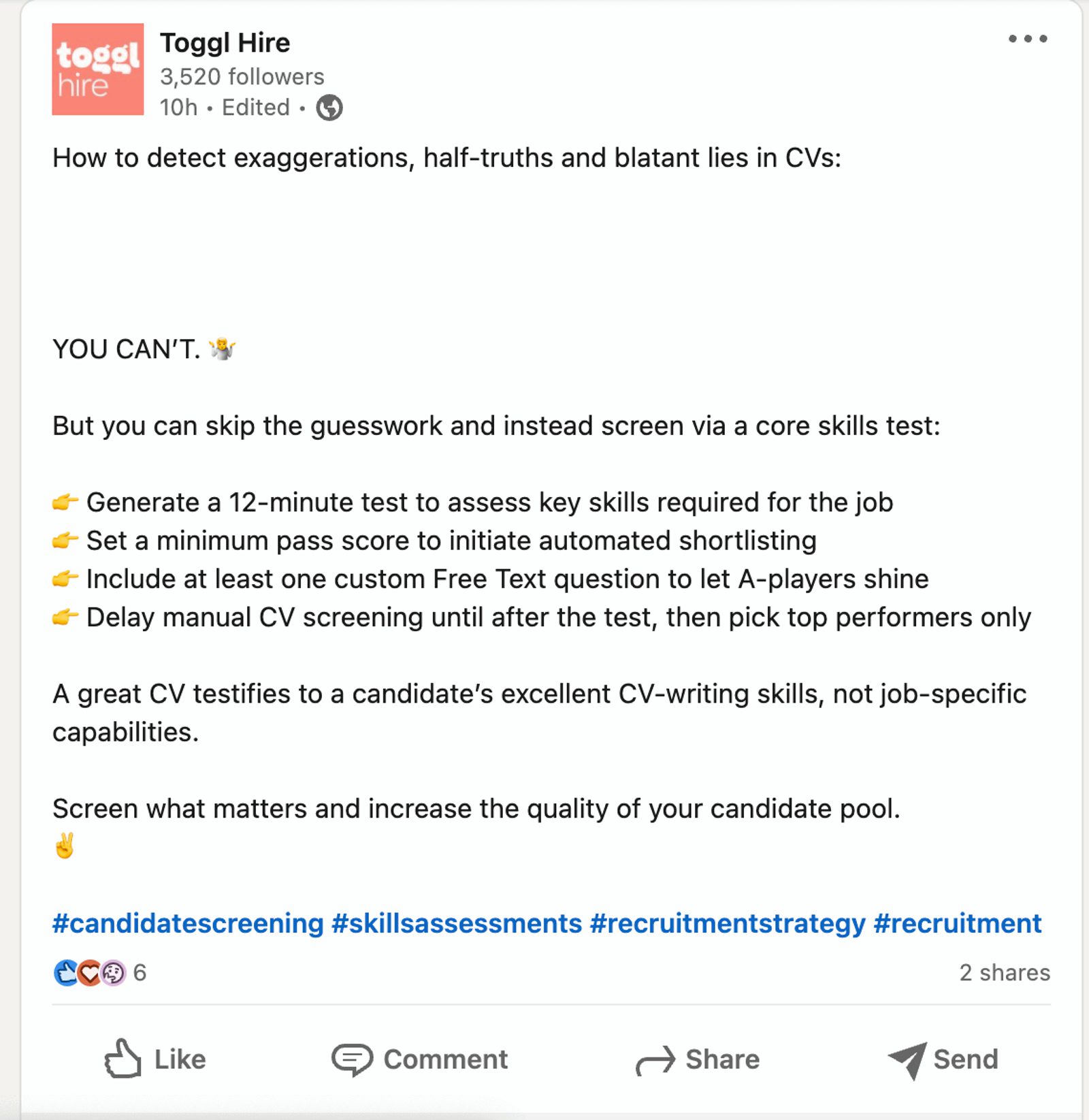
3. Asana
Asana, an online project management platform, uses a combination of inbound and outbound tactics as part of its multi-channel campaign.
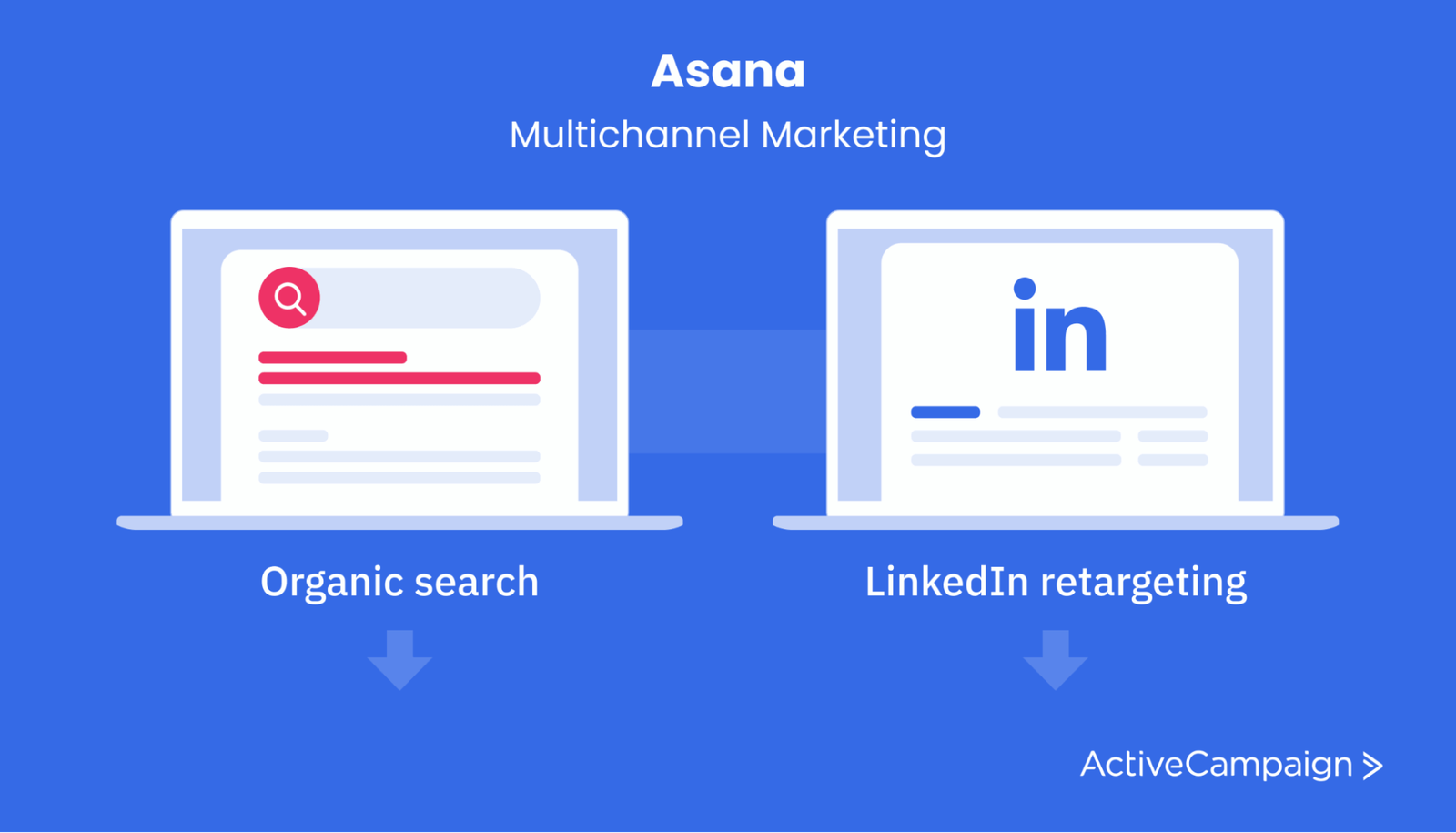
First, Asana focuses on developing organic content that is highly relevant to its user's needs.
For instance, 1 of Asana’s value propositions is the efficiency and speed of task management (at its core, saving customers time each day).
So, it’s developed content targeting task-focused keywords, like “task switching vs multitasking.”

This featured snippet captures top-of-funnel traffic, so its CTA isn’t focused on converting; it’s designed to educate the customer even more.

Asana then engages in retargeting on LinkedIn, running sponsored ads aimed at middle and bottom-of-funnel buyers (try our product for free), rounding out its multi-channel marketing strategy.
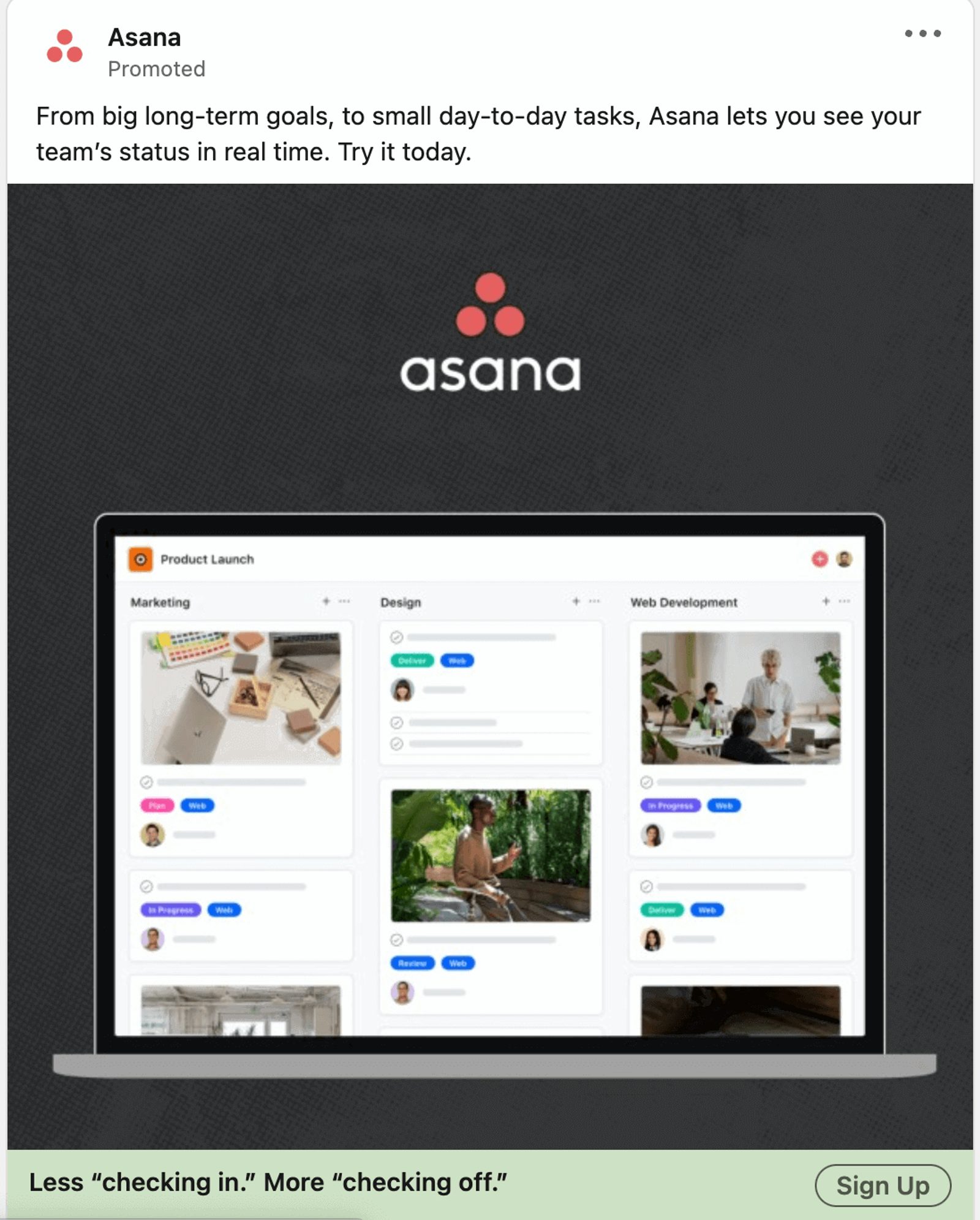
4. BigCommerce
BigCommerce, an ecommerce website platform, has developed a powerful lead funnel that takes advantage of multiple marketing channels.
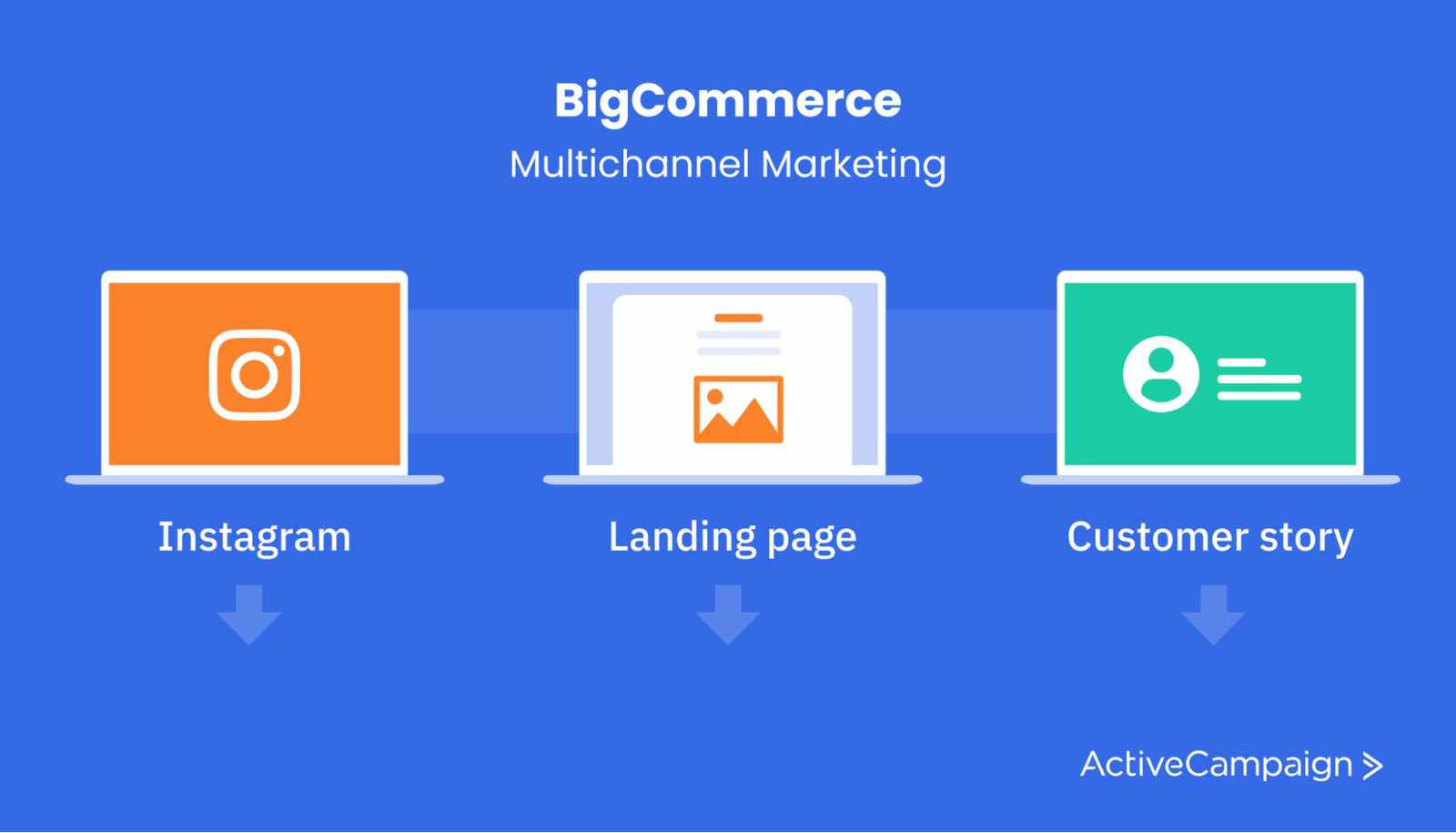
First, BigCommerce catches audience attention through a sponsored Instagram ad.
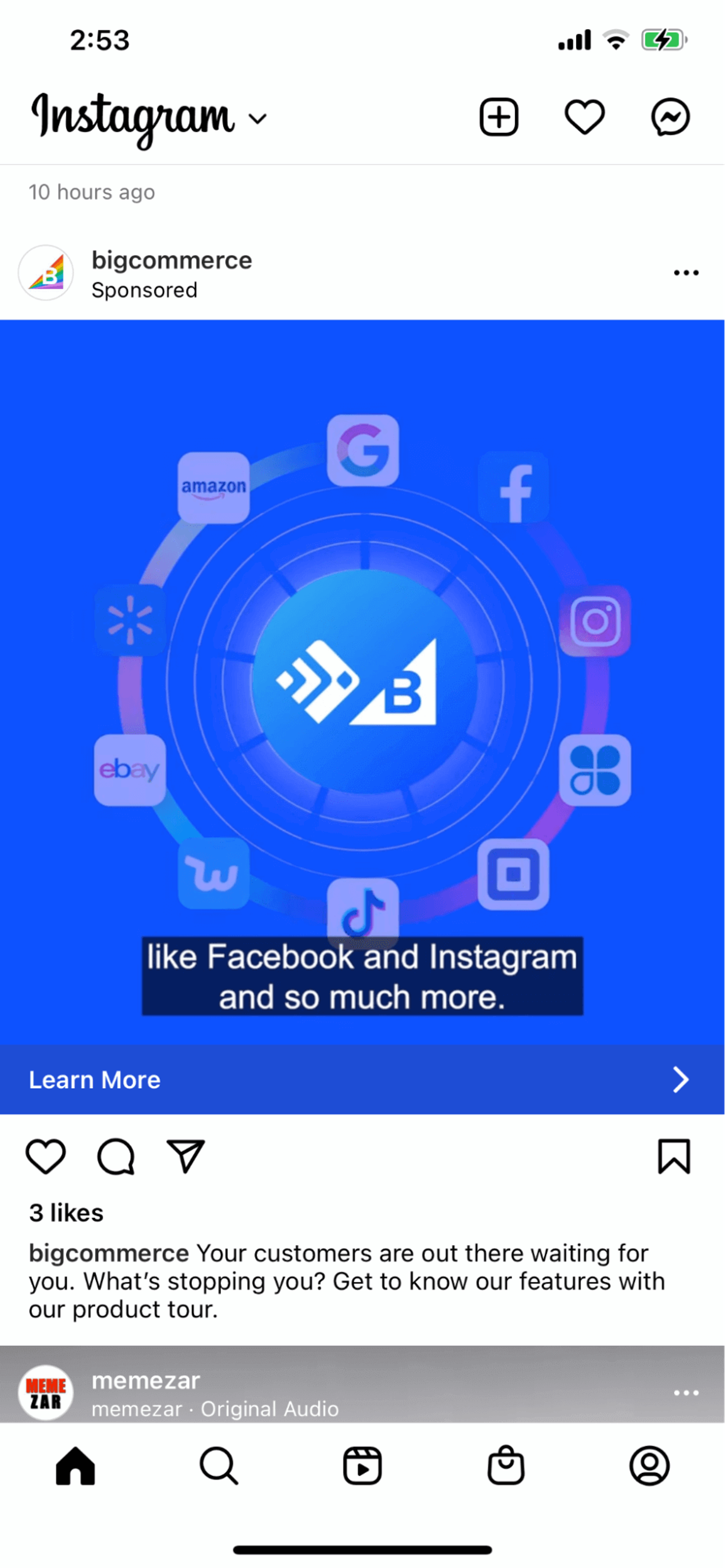
Clicking on this ad drives readers through to a dedicated landing page, promoting the features of BigCommerce’s Essentials plan.

Halfway through this landing page, BigCommerce supplements its offer with some powerful social proof from existing customers.
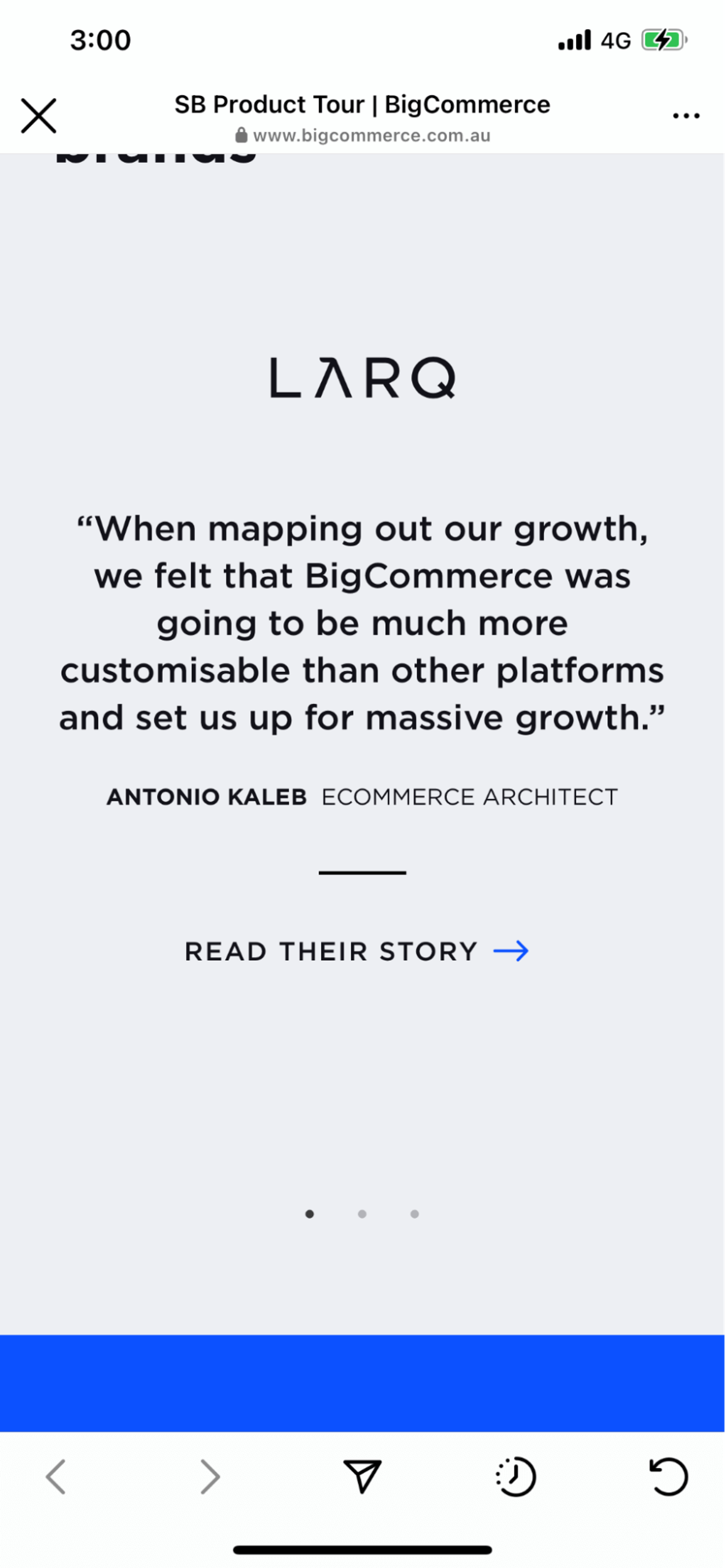
This funnels customers through to a dedicated customer success story page, which backs up some impressive results with a thorough analysis of how BigCommerce supported this customer in their success.
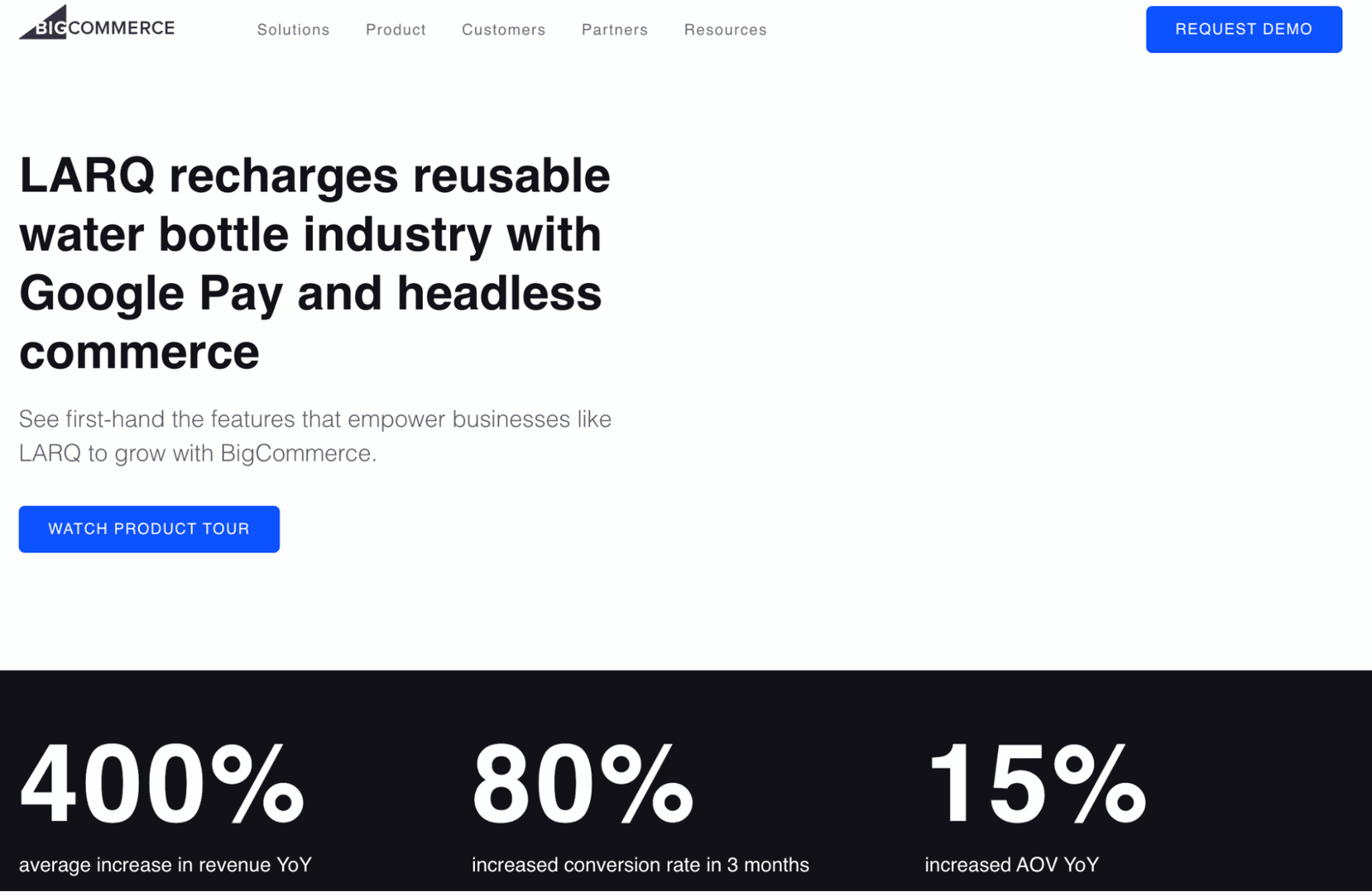
Then, BigCommerce directs readers to 1 of 2 CTAs: a demo request, or an online product tour, both of which are lead capturing devices.
Get The most Out of Multi-Channel Marketing
5. Demodesk
Like Toggl Hire, Demodesk takes an inbound approach, building a multi-channel campaign across organic channels.

For Demodesk, it starts with engagement on its Facebook page.
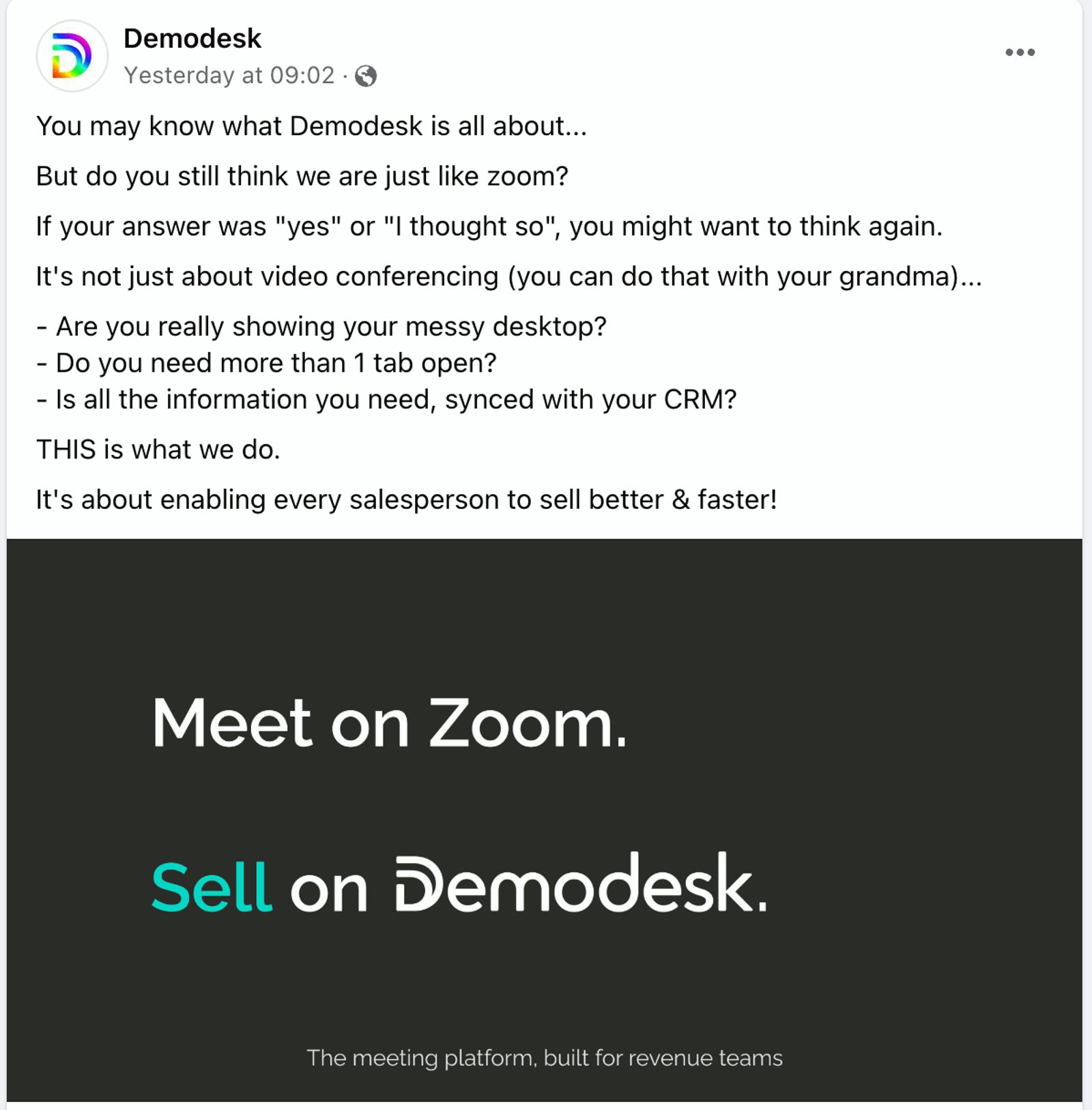
Demodesk is a sales engagement platform centered around a video conferencing feature.
Naturally, prospects compare Demodesk with Zoom regularly. So, Demodesk creates and distributes content that demonstrates precisely why its platform is a superior tool.
It backs this Facebook post up with a comprehensive blog post on outdated meeting tools.

The CTA at the bottom of this blog post further promotes Demodesk’s product with effective messaging: “Win more deals, faster.”

This CTA directs to a product landing page focused specifically on the benefits of using Demodesk to run sales meetings (that is, it’s directly relevant to the social media post and article that the customer just read).

Another CTA directs readers to sign up for a free product demo; from there, it’s into the sales funnel.
6. Copper
Sales CRM Copper knows that loyal customers are what drive its recurring revenue growth.

As such, it focuses on creating educational content that supports existing customers and teaming up with other products its customers may already be using.
This ebook on revenue marketing is the perfect example.
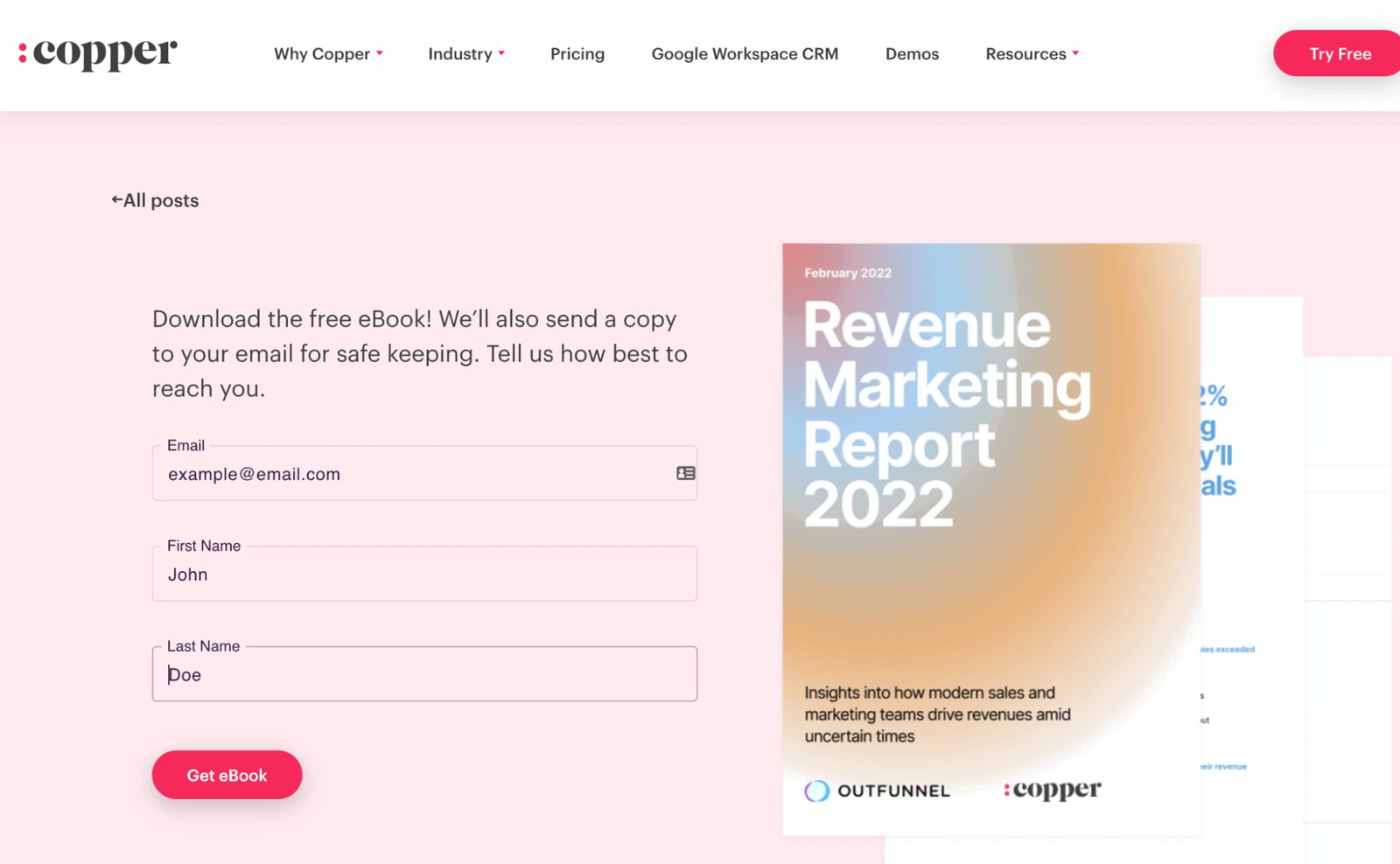
Copper teams up with Outfunnel, a tool designed to connect sales and marketing platforms, to deliver this free ebook that educates existing buyers and acts as a lead magnet for new customers.
Copper also leverages its relationship with Outfunnel by obtaining backlinks from its partner’s website.

Outfunnel prospects can learn about Copper on the Outfunnel site. If they sign up for Outfunnel on a Copper-specific landing page, this info can be shared with the Copper sales team (with the customer’s permission) to engage in an account-based marketing play.
7. ActiveCampaign
ActiveCampaign (hey, that’s us!) uses a multi-channel marketing funnel to capture leads and nurture them via email marketing.

Naturally, our messaging is all about email marketing (meta, we know).
We start with a few digital banner ads, served to readers who fit our customer persona criteria.

Readers can click through to a free trial, but we’re also happy just to build awareness with these ads.
Higher-intent customers will find us through organic search terms like “marketing automation.”

This focus on the SEO channel brings readers to our blogs and website landing pages, like this 1 dedicated to our marketing automation product.

Again, we aim to convert readers to a free trial (we believe that once you try ActiveCampaign for 14 days, that’s all the convincing you’ll need).
Those who sign up for a free trial receive a welcome email with relevant content to get them up and running quickly.

This is the first in a multi-email lead nurture campaign, which includes a number of educational content pieces, such as this product-focused webinar.
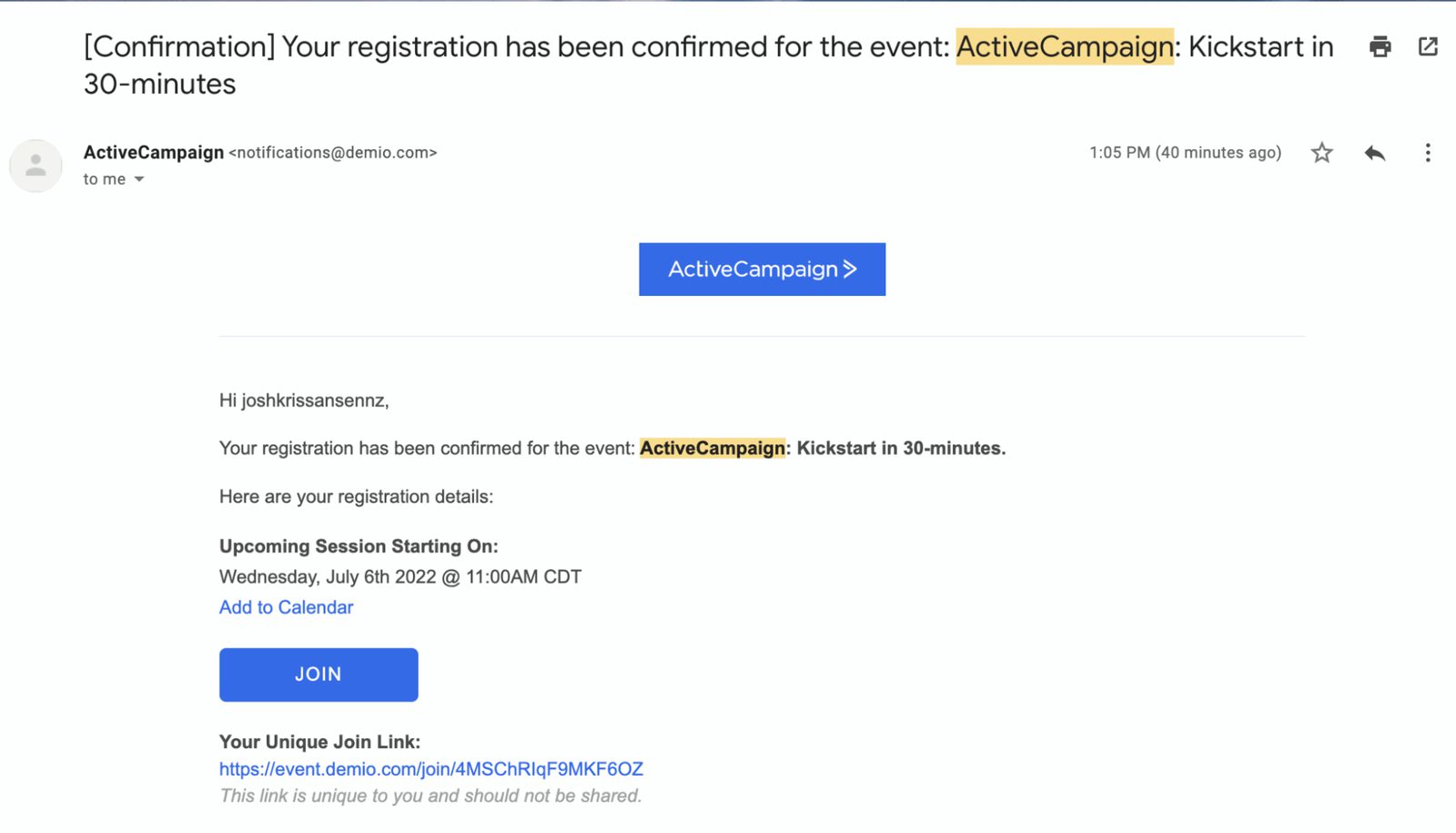
FAQs
What is multi-channel in marketing?
In marketing, multi-channel refers to using multiple channels (for example, social media, email, PPC, organic content, and digital advertising) to communicate with customers to build brand awareness, generate demand, and capture leads.
What is an example of multi-channel marketing?
TestGorilla provides a great example of multi-channel marketing, capturing and nurturing leads across 3 channels: social media, email, and PPC.
Read more about TestGorilla above.
What is an example of a multi-channel retailer?
ASOS, a multi-national fashion retailer, is big on multi-channel marketing, communicating with customers across:
- Digital ads (retargeting)
- Its website
Conclusion
You might have noticed a trend here.
Many of these multi-channel marketing examples center around lead generation (capturing an email address), then nurturing that customer through automated email campaigns.
You will need a powerful email marketing partner by your side to achieve this.
Try ActiveCampaign free for 14 days, and let us show you exactly how we can turn your multi-channel campaign into a revenue-generating beast.



